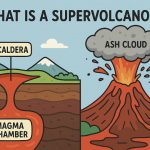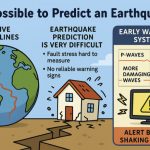Volcanoes are some of the most powerful forces on Earth, capable of shaping landscapes, affecting global climate, and endangering lives. Predicting a volcanic eruption remains one of the greatest challenges in Earth science. While exact timing is still difficult to determine, modern science has made significant progress in detecting early warning signs, improving risk assessment, and reducing disaster impact.
How Scientists Monitor Volcanoes
To predict volcanic activity, scientists rely on multiple monitoring techniques that detect physical and chemical changes within a volcano.
Key methods include:
- Seismology – Measures earthquakes caused by moving magma. Increased seismic activity near a volcano often precedes an eruption.
- Ground deformation – GPS and satellite tools detect swelling of the ground as magma accumulates beneath the surface.
- Gas emissions – Rising levels of gases like sulfur dioxide (SO₂) and carbon dioxide (CO₂) can signal magma rising toward the surface.
- Thermal imaging – Infrared sensors detect heat increases near volcanic vents and lava domes.
- Hydrology – Changes in water temperature and chemistry in nearby lakes and springs may indicate volcanic unrest.
These methods are often used in combination for a more complete picture.
Signs That an Eruption May Be Approaching
Certain signs often precede an eruption, although the intensity and sequence can vary:
- Increased frequency and magnitude of tremors
- Bulging or uplift of the volcano’s surface
- Sudden increases in volcanic gas output
- Visible steam or fumaroles intensifying
- Cracking sounds, rockfalls, or landslides on the volcano
These signals allow authorities to issue warnings and initiate evacuations, which can save lives — as seen during the 1991 Mount Pinatubo eruption in the Philippines.
Can We Predict the Exact Time of an Eruption?
Despite technological advances, exact predictions (date, hour, and magnitude) are not yet possible. Each volcano has its own behavior, and some signs may last weeks or months without an eruption. Others may erupt suddenly with minimal warning.
Prediction depends on:
- Historical patterns of the volcano
- Quality of monitoring equipment
- Access to real-time data
- Human interpretation of signals
Still, monitoring systems have significantly improved preparedness, especially in high-risk regions like Japan, Indonesia, and Italy.
Volcano Alert Systems
Most countries with active volcanoes operate volcano alert levels, which range from:
- Normal / Green – no signs of unrest
- Advisory / Yellow – increasing activity
- Watch / Orange – high probability of eruption
- Warning / Red – eruption underway or imminent
These systems are crucial for coordinating emergency services and informing the public.
Glossary
- Seismology: The study of earthquakes and ground vibrations.
- Fumarole: An opening in a volcano that emits steam and gases.
- Sulfur dioxide (SO₂): A volcanic gas used as a warning signal.
- Ground deformation: Changes in the shape of a volcano due to magma movement.
- Infrared imaging: A method to detect heat invisible to the human eye.


